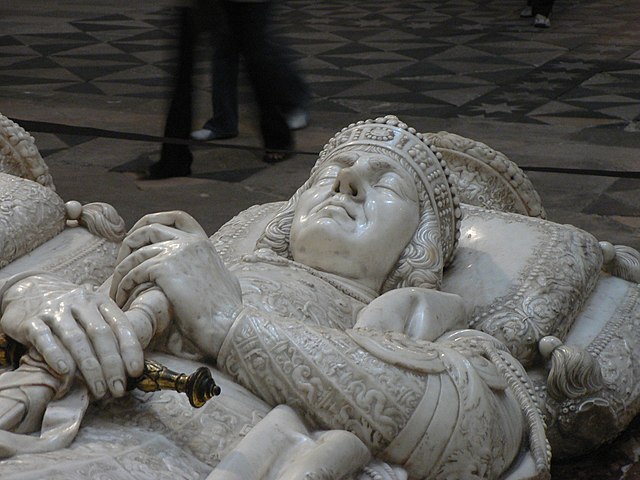The Liturgical Arts Journal last week reported on the controversial plans for new west doors for the cathedral at Burgos in Spain. I shared this story with readers along with something about the history and fabric of the cathedral itself. I see that the story continues to generate interest as can be seen in an article in the Guardian which can be seen at 'An eyesore': thousands protest against Spanish cathedral's new doors
The Liturgicl Arts Journal has now got a post about another aspect of the heritage Burgos with an article about a cope which is the surviving part of a set of vestments given to the Chapel of the Constable or Condestable at its foundation in the late fifteenth century.
What is striking is that the cope is made of high quality silk woven in Muslim Granada in the years 1408-1417 - so it was not new when the chapel was being built - and that the fabric incorporates a specifically Islamic text “Glory to our lord the Sultan”. In that respect it is reminiscent of the twelfth century coronation robe of the Kings of Sicily.
The post about the cope can be seen at
Islamic textiles: The Condestable’s Cope

Burgos Cathedral
The Chapel of the Condestable is on the left
Image: Shutterstock
The chapel was begun in 1482 by the Condestable of Castile, Don Pedro Fernandez de Velasco and his wife Dona Mencia de Mendoza y Figueroa. It replaced and greatly expands in area the easternmost ambulatory chapel of the thirteenth century cathedral. Described by one writer, not unreasonably, as the “grandest chantry chapel” he had seen. If one sees King Henry VII’s Chapel at Westminster as a chantry then that perhaps outstrips that of the Condestable. The Burgos chapel rises through two stories on an octagonal plan. The architect was Simon de Colonia, the son of Juan de Colonia the designer of the western spires of the cathedral. After Simon’s death in 1511 the work was completed by his son Francisco. There is an account of Simon at Simón de Colonia which also describes his other building project for the couple, the Casa del Cordon in Burgos. Its conscious Franciscan imagery offers an insight into the spirituality of the Condestable and his wife.
The Chapel exterior from the east
Image: Wikimedia Commons

The interior of the Chapel
The tomb of the Condestable and his wife is in front of the altar
Image: Web Gallery of Art
The vault of the Chapel
Image: Spainthenandnow
The main altar in the Chspel is dedicated to the Presentation of Christ in the Temple and there are two other altars dedicated to St Anne and St Peter.
The Burgos born Pedro Fernandez de Velasco
( 1425/1430-1492 ) Count of Haro, of whom there is a biography at Pedro Fernández de Velasco, 2nd Count of Haro, was appointed to the hereditary office of Constable of Castile by King Enrique IV in 1473. The history of the position is described at Constable of Castile.
The effigy of the Condestable in the Chapel. The Countess is to his right
Image: Wikipedia
The Condestable’s son was created Duke of Frias in 1492 and there is an account of his successors at Duke of Frías
There is a good illustrated online account of the whole cathedral available at Burgos Cathedral.
The Chapel of the Condestable is a wonderful composition which with its architecture and impressive heraldic sculpture, the tomb of the founders, the altars and the surging cope makes manifest the material culture and spiritual impulses of the age of King Ferdinand and Queen Isabella.





No comments:
Post a Comment